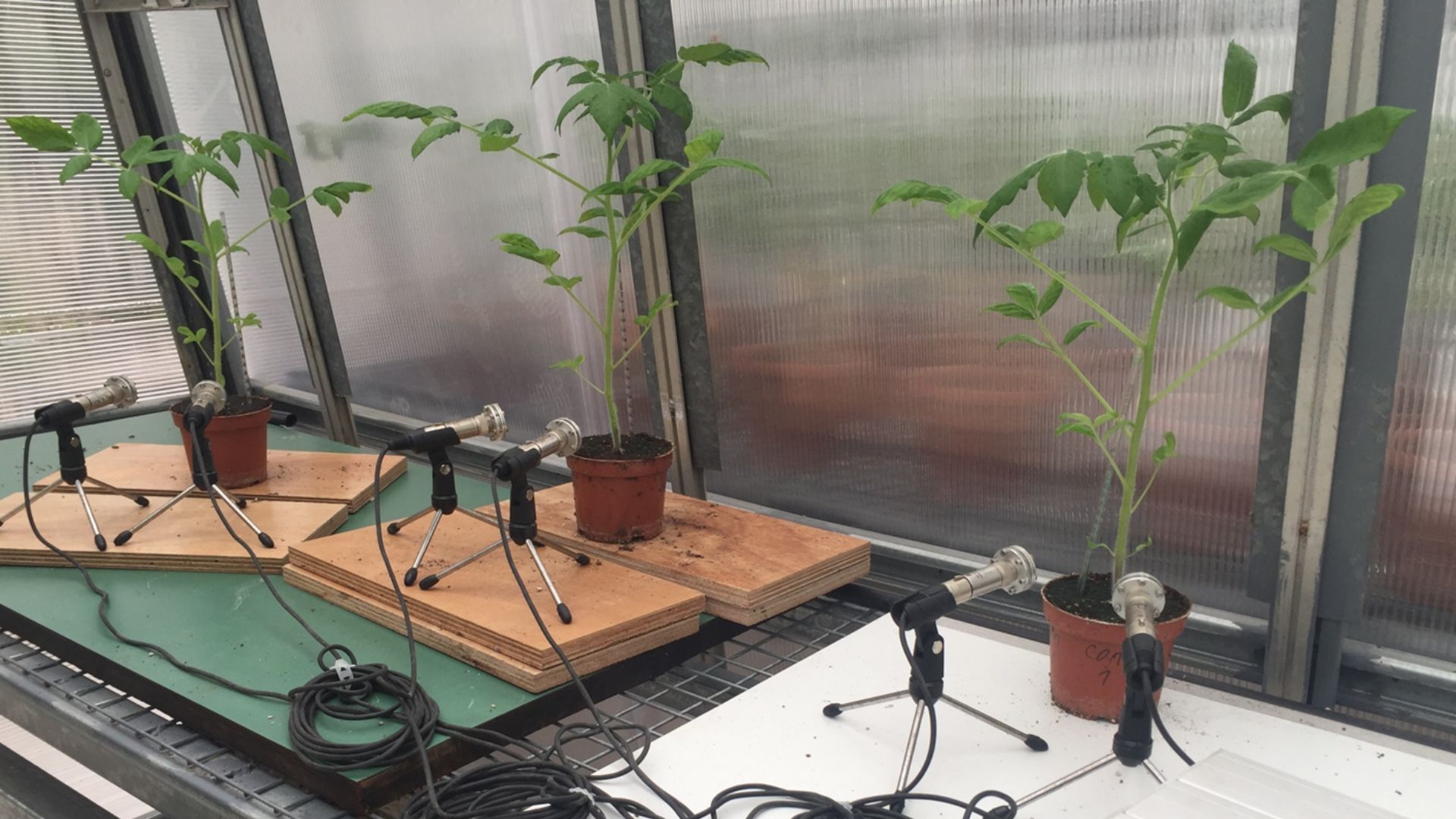
When deprived of water or snipped with scissors, plants emit a flurry of staccato "screams" that are too high-frequency for humans to hear, a study suggests. When lowered into a range that human ears can detect, these stress-induced pops sound like someone furiously tap dancing across a field of bubble wrap.
Although humans cannot hear these ultrasonic pops without technological assistance, various mammals, insects and even other plants may be able to detect these noises in the wild and respond to them, researchers reported Thursday (March 30) in the journal Cell. (The same researchers first shared their popping-plant discovery in 2019 on the preprint database bioRxiv, but the work has now been peer-reviewed.)
In the future, humans could harness recording devices and artificial intelligence (AI) to monitor crops for these signs of dehydration or disease, the scientists suggest.
Past research revealed that drought-stressed plants undergo a process called cavitation — where air bubbles form and collapse within the plant's vasculature tissue — which makes a popping sound that can be detected by recording devices attached to the plant. But it wasn't clear if such popping sounds could be heard at a distance, the authors wrote in Cell.
Related: Otherworldly 'fairy lantern' plant, presumed extinct, emerges from forest floor in Japan
So the team set up microphones near healthy and stressed tomato (Solanum lycopersicum) and tobacco (Nicotiana tabacum) plants, both in a soundproofed box and in a greenhouse setting. The stressed plants were either dehydrated or had their stems snipped. The team also recorded pots with only soil in them, to check that soil, alone, didn't make any sounds. (They found it didn't.)
On average, healthy plants let out less than one pop per hour, but the stressed plants emitted about 11 to 35, depending on the plant species and stressor. Drought-stressed tomato plants were noisiest, with some plants emitting more than 40 pops per hour.
The team fed these recordings into a machine-learning algorithm — an AI system used to identify patterns in data — and found that the trained algorithm had about a 70% success rate in distinguishing the sounds made by different plants exposed to different stressors. They trained another AI system to differentiate between drought-stressed and healthy tomatoes in a greenhouse with more than 80% accuracy. Another model could tell what stage of dehydration a plant was in with about 80% accuracy.
In additional experiments, the team successfully recorded sounds from diseased tomato plants infected with tobacco mosaic virus, and captured the cries of a slew of other stressed plants, such as wheat (Triticum aestivum), corn (Zea mays) and pincushion cactuses (Mammillaria spinosissima).
Although the researchers gathered these recordings by setting microphones about 4 inches (10 centimeters) away from the plants, they suggest that these ultrasonic sounds could potentially be heard by mammals and insects with great hearing from 9.8 to 16.4 feet (3 to 5 meters) away.
"These findings can alter the way we think about the plant kingdom, which has been considered to be almost silent until now," the study authors wrote.







